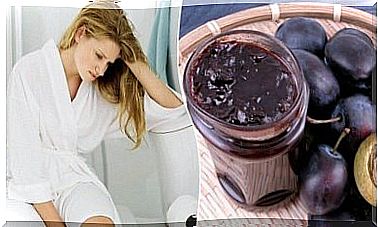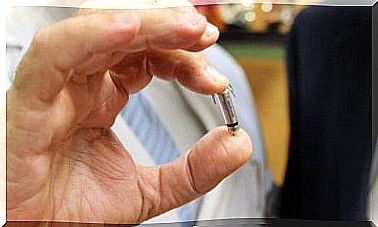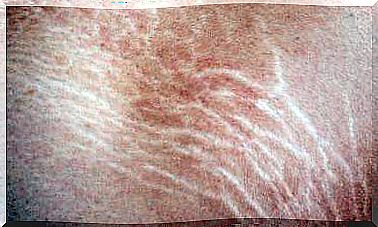Kohlrabi: Nutritional Value, Benefits And How To Prepare It
Cabbage or turnip? Although they seem very different, there is a vegetable that has both: kohlrabi. It is a cross between a cabbage ( Brassica oleracea) and a turnip ( Brassica rapa).
It is considered a cruciferous tuber, also known as rutabaga , nabicol , Swedish turnip or kohlrabi . Percival has described it as a cabbage that has a stem similar to a turnip.
This vegetable is suspected to have originated in the Czech Republic during the 17th century, as a cross between wild cabbage and turnip. It is grown in North America, Canada and northern Europe, forming part of their gastronomy. There are two main types: the purple-skinned one that is confused with radish and Laurentian, a Canadian variety with creamy flesh.
Kohlrabi both the leaves and the bulb are used. They have a taste and texture similar to broccoli and cabbage, but when cooked they take on a sweetness similar to sweet potatoes.
Kohlrabi nutritional values
Kohlrabi has some surprising nutrients in quantities and that we will see below, according to data provided in the food composition table, in grams per 100 grams of raw vegetable.
For vitamins and minerals, the percentages that cover the recommended daily value (DV) are shown:
- Calories : 27.
- Carbohydrates : 6.2 grams.
- Fiber : 3.6 grams.
- Vitamin B6 : 0.15 milligrams – 12% of the DV.
- Protein : 1.7 grams.
- Vitamin C : 62 milligrams – 103% of the DV.
- Potassium : 350 milligrams – 7% of the DV.
- Phosphorus : 46 milligrams – 4% of the DV.
- Vitamin B9 : 16 milligrams – 4% of the DV.
Kohlrabi provides vitamin C above the recommended daily value. According to Castillo-Velarde, vitamin C is considered a very powerful antioxidant against free radicals.
In addition, a group of doctors recommends it as a wound healing. They stand out for the good absorption of iron and for its immunomodulatory capacity. However, heat can destroy it. This is why some experts suggest microwave or steam cooking.
Kohlrabi manages to cover 12% of the recommended intake of vitamin B6. Brown and other authors state that pyridoxine is necessary for protein metabolism, red blood cell production, and immune health.
This interesting vegetable is also a good source of potassium, a mineral that, according to Tejada-Cifuentes, pharmacy doctor, maintains heart health and fluid balance as an electrolyte.
On the other hand, a cup of kohlrabi or 135 grams provides 17% of the daily needs for dietary fiber. Recognized by nutritionists for its benefits in the prevention of diabetes, body weight and gastrointestinal health, among others.
Possible health benefits of kohlrabi
Kohlrabi is recognized for multiple health benefits, due to the presence of certain nutrients and bioactive components. Let’s see some of them and their scientific backing.
Source of antioxidants
In the journal Preventive Nutrition and Food Science , kohlrabi is highlighted for its variety of antioxidants, since in addition to vitamin C it contains phytochemicals that block free radicals. Anthocyanins, isothiocyanates, sulfurophanes and glucosinolates are some of them.
The purple skin of kohlrabi is very rich in anthocyanins, a pigment that gives some vegetables and fruits a red, purple or blue color. Cassidy and other researchers argue that these pigments have a positive effect in preventing heart disease, while Devore and other authors associate them with less mental decline.
Kohlrabi, especially the purple one, contains isothiocyanates and glucosinolates. According to certain observational studies, they have been associated with a lower risk of colorectal cancer, although more specific studies are suggested in this regard to confirm the findings.
May prevent heart disease
Some researchers argue that glucosinolates in crucifers widen blood vessels and reduce inflammation; hence they are associated with a lower risk of heart disease. For their part, isothiocyanates prevent the accumulation of fatty plaques in the arteries.
Anthocyanins can also lower blood pressure and the risk of heart failure, as documented by a group of experts and the journal Circulation .
Not only the presence of phytochemicals can reduce the risk of cardiovascular diseases. The high fiber content protects against heart disorders. This is supported by a review of 15 studies on a 24% decrease in the probability of suffering from this disease.
Helps maintain a healthy gut
Kohlrabi is a cruciferous with high fiber values. A daily cup covers 17% of the recommended needs.
Nutrients magazine states that some types of soluble fiber can act as prebiotics. That is, to be food for beneficial bacteria, such as bifidobacteria and lactobacilli. A review in this regard argues that fiber maintains intestinal health and protects against obesity and heart disease.
The journal Nutrition Hospital also refers to prebiotic fiber for its positive effects on bacteria associated with a healthier immune system.
On the other hand, the Spanish Digestive System Foundation recommends insoluble fiber to help increase stool volume and improve constipation.
It can boost the immune system
Kohlrabi can make an important contribution to the diet of vitamin B6. One cup a day covers 15% of the recommended values.
Vitamin B6 participates in the production of T cells and white blood cells. These are immune cells that deal with foreign substances and are important for a healthy defense system.
Several researchers agree that supplementation with vitamin B6 and other micronutrients improves all three levels of immunity.
On the other hand, the Nutrients magazine also highlights the role of ascorbic acid in strengthening the function of white blood cells and strengthening the immune system. The vitamin C of kohlrabi covers the entire requirement for an adult.
Care in the consumption of kohlrabi
Some dermatology studies have revealed a food hypersensitivity to kohlrabi. Itching, atopic dermatitis, skin rash, rhinitis, respiratory problems, gastrointestinal disorders, and an allergic contact reaction may occur.
On the other hand, a scientific review indicates that caution should be exercised with consuming kohlrabi and the anticoagulant warfarin at the same time, as they can interact unfavorably.
How to prepare kohlrabi?
Kohlrabi can be prepared raw or cooked. When enjoyed raw, its flavor is reminiscent of broccoli, but a little softer and with a touch of spice.
It can be added to salads, grated or thinly sliced or julienne. You can serve it as a garnish, substituting for potatoes, or as part of a serving of mixed greens.
If you prefer, it goes great as a crunchy appetizer with hummus. Since the skin is somewhat difficult to chew, you can remove it with a sharp knife without problem.
The leaves can be prepared raw in salads or steamed like chard or spinach. They are also sautéed to add to a soup.
The tuber, when cooked, becomes sweeter. If you prefer it in the oven, we recommend letting it brown until tender or combining it with cauliflower, broccoli and adding onions to contrast the flavor of the crucifers.
As a cream soup it is exquisite. You can mix it with chicken broth, cooked potato, fine herbs, and vegetables. Remember that the lower the heat during preparation, the better you take advantage of the vitamin C in kohlrabi. So you can steam it or sauté it with garlic, olive oil and a little chopped parsley.
Kohlrabi is a vegetable loaded with nutrients and active compounds beneficial to health. It is very rich in vitamin C, B6, fiber and flavonoids. You can eat it raw or cooked, alone or with other vegetables, but not before making sure that you are not sensitive to its components.
